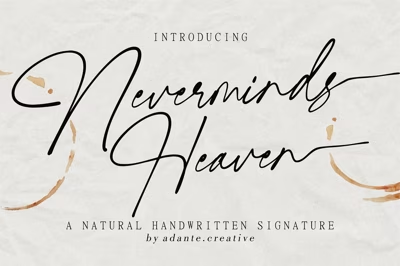How to Add Custom Fonts to Your Website Using CSS @font-face
How to Add Custom Fonts to Your Website Using CSS @font-face
Want your website to stand out with a unique typographic voice? You don’t have to rely solely on Google Fonts. With @font-face, you can embed any custom font directly into your site — giving you full control over your brand’s identity.
Let’s break down how @font-face works and how you can use it in real-world projects.
What is @font-face?
@font-face is a CSS rule that allows you to define custom fonts and use them just like system or web-safe fonts. Unlike Google Fonts, it doesn’t require external APIs — the font is served directly from your own server or CDN.
What You’ll Need
-
The font file (usually
.woffor.woff2, sometimes.ttfor.otf) -
Basic knowledge of HTML and CSS
-
A web server or local development setup
Step-by-Step: How to Use @font-face
1. Add the Font Files to Your Project
Let’s say you have a font called CustomFont.woff2. Place it inside a folder like this:
/fonts/CustomFont.woff2
2. Add the @font-face Rule to Your CSS
@font-face {
font-family: 'CustomFont';
src: url('/fonts/CustomFont.woff2') format('woff2'),
url('/fonts/CustomFont.woff') format('woff');
font-weight: normal;
font-style: normal;
}
3. Apply the Font in Your Styles
body {
font-family: 'CustomFont', sans-serif;
}
That’s it! Your website will now load and render using the custom font.
Best Practices & Tips
-
Use
.woff2as your primary format — it’s compressed, web-optimized, and widely supported. -
Always include a fallback font (like
sans-serif) for safety. -
Keep font file sizes small for faster load times — under 100KB is ideal.
-
Use a font-display strategy if needed:
font-display: swap;
This improves perceived performance and avoids invisible text on slow networks.
Optional: Add Multiple Weights or Styles
@font-face {
font-family: 'CustomFont';
src: url('/fonts/CustomFont-Bold.woff2') format('woff2');
font-weight: bold;
font-style: normal;
}
You can define different @font-face blocks for regular, bold, italic, etc.
🌐 Browser Compatibility
Good news: @font-face is supported in all modern browsers — even Internet Explorer 9+.
| Browser | Support |
|---|---|
| Chrome | ✅ |
| Firefox | ✅ |
| Safari | ✅ |
| Edge | ✅ |
| IE 9+ | ✅ |
Licensing Reminder
Only use custom fonts you’re legally allowed to host on your site. Look for:
-
Open Font License (OFL)
-
SIL license
-
Fonts marked as "self-hosting allowed" or "free for commercial use"
Final Thoughts
Custom fonts give your website a unique personality and better brand consistency. With @font-face, you’re no longer limited to third-party libraries — your design, your server, your rules.
Go ahead, make your typography as bold as your vision.





